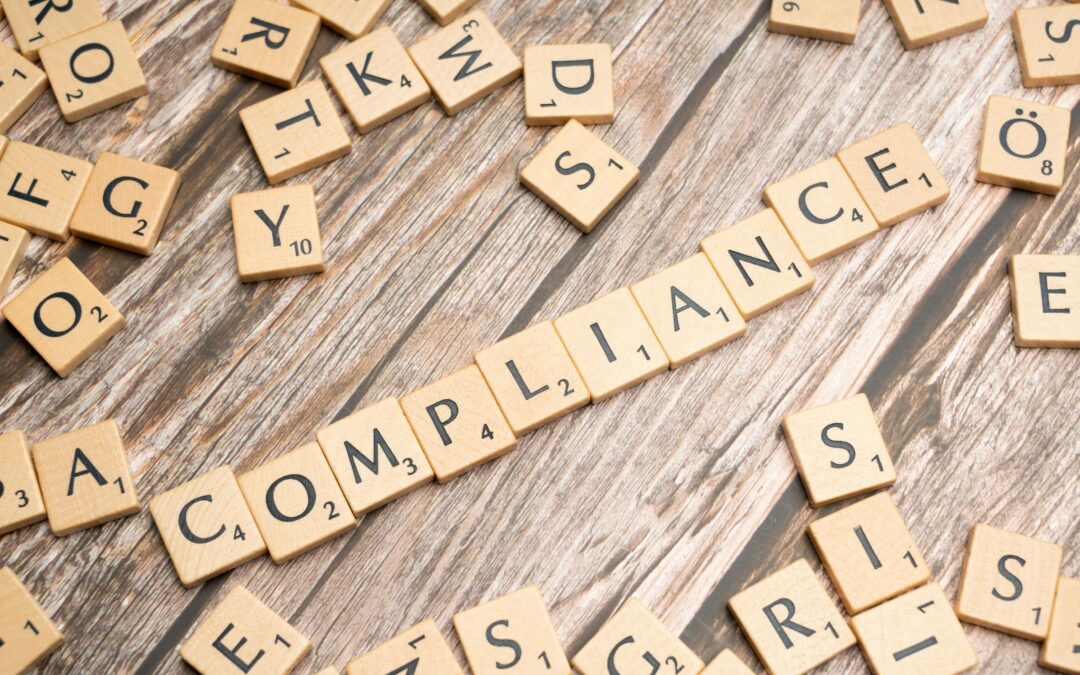
by Jim Taylor | May 6, 2024 | Conflict Resolution, Employee Retention, Human Resources, Uncategorized
To understand the importance of mastering employee grievance procedures, you should consider the snowball effect. Most HR consultants can have stories of minor grievances that quickly escalate into larger conflicts. Those tend to significantly affect team morale and, ultimately, its productivity. Without a structured grievance procedure in place, the situation can become almost impossible to manage.
In the dynamic landscape of modern workplaces, maintaining peace and productivity is paramount. Companies of all sizes find effective employee grievance procedures crucial in business. They help resolve conflicts in a timely manner, thereby fostering a harmonious work environment.
However, small business owners and HR leaders often face challenges when managing grievances manually. They can benefit from streamlined and efficient solutions, like those found with Launchways. In this context, understanding the fundamentals and importance of clear employee grievance procedures becomes imperative.
What Is a Workplace Grievance?
A workplace grievance is when an employee formally or informally complains about their work environment, conditions, or treatment. These complaints can cover individual issues or larger group or union-related problems. They are all critical, and they all need to be handled and resolved correctly.
Types of Employee Grievances
Employee grievances can be categorized into individual, group, or union-related issues. Each type requires specific approaches and considerations to achieve fair and satisfactory outcomes in the grievance-handling process.
Individual Grievances
Individual grievances occur when a single employee experiences a problem in the workplace. Common issues include:
- Pay and benefits disputes
- Excessive workload concerns
- Workplace favoritism complaints
- Bullying or workplace discrimination issues
- Lack of transparency in promotions
Group Grievances
Group grievances involve a collective complaint from multiple employees with similar concerns. Examples include:
- Gender pay gap disputes
- Employee schedule disagreements
- Grievances related to organizational changes
Union Grievances
Unions file grievances on behalf of workers when they believe their rights are not being upheld. Examples of union grievances include:
- Improper deduction of union dues by management
- Violations of collective bargaining agreements
Understanding these different types of grievances helps organizations address employee concerns effectively.
Understanding Employee Grievance Procedures
Effective employee grievance procedures are crucial for dealing with conflicts quickly and keeping the workplace peaceful.
Importance of Clear Procedures
Clear and transparent grievance procedures are important for solving conflicts effectively in organizations. When employees know exactly what to do and how their concerns will be handled, it builds trust.
This trust makes employees more comfortable sharing their grievances. In turn, that ensures that problems are dealt with fairly and quickly.
Legal Compliance
Another essential part of employee grievance procedures is understanding their legal implications and compliance requirements. Businesses need to follow these legal requirements to fairness in the process.
Following the law protects employees and keeps the organization safe from legal problems.
Creating a Workplace Grievance Policy
Creating clear employee grievance procedures is essential for managing grievances well in an organization. They outline:
- What steps to follow
- Who is responsible for what
- What are the deadlines for resolving issues
- What to do if a grievance isn’t resolved
Having a detailed policy helps everyone know what to expect. It promotes fairness and openness when dealing with employee concerns.
Benefits of Grievance Procedures
Employee grievance procedures offer significant benefits to organizations and employees alike, such as tthte following:
Promoting Transparency
Grievance procedures promote transparency in addressing employee concerns, fostering a positive work culture.
Resolving Issues Proactively
By addressing grievances promptly, organizations can prevent conflicts from escalating and impacting productivity.
Improving Employee Relations
Effective employee grievance procedures demonstrate that the organization values employee feedback. They also show their commitment to addressing concerns and lead to improved employee relations.
Employee Grievance Process Steps
The process for employee grievance procedures typically includes the following steps:
- Receipt of Grievance: The process begins with receiving and documenting the grievance.
- Investigation and Analysis: The HR team investigates the grievance. It gathers relevant information and analyzes the situation.
- Resolution and Communication: A resolution is proposed once the investigation is complete. It is then communicated to the parties involved and implemented.
- Follow-Up and Monitoring: Follow-up measures ensure that the resolution is adequate. Ongoing monitoring helps identify any recurring issues or trends.
Grievance Procedure Best Practices for Managers
Managers play a crucial role in the grievance process. Best practices for managers include the following:
- Active listening
- Maintaining confidentiality
- Conducting fair investigations
- Providing regular updates to employees involved
Are Automated Solutions Right for Your Employee Grievance Process?
Launchways offers a comprehensive approach. They help companies assess whether automated solutions are suitable for their people processes. Here’s how Launchways can assist:
Evaluation of Needs
Launchways begins by evaluating your company’s specific needs and requirements. This assessment considers factors such as the existing processes and desired outcomes.
Software Selection Guidance
Based on the evaluation, Launchways provides guidance on choosing the right automated software. They consider scalability, ease of use, and data security features to ensure a seamless fit.
Customized Training and Integration Support
Launchways offers full support to help organizations adopt and use automated grievance systems smoothly. Services include:
- Customized Training Solutions: Tailored training programs are designed to fit your company’s specific processes. These programs help employees use the automated grievance system effectively.
- Integration Support: Assistance is provided in integrating the automated system into your existing HR processes.
Teaming up with Launchways helps companies make smart choices about using automated solutions. This can lead to better efficiency, accuracy, and happier employees.
Key Points
Effective employee grievance procedures are crucial for workplace peace and a positive culture. Here are the things to remember:
- Understanding Grievance Procedures: Mastering these processes is vital. Launchways’ automated solutions can benefit small businesses and HR leaders.
- Importance of Clear Procedures: Transparency in grievance handling builds trust. It encourages employees to voice concerns promptly.
- Legal Compliance: Adherence to legal aspects ensures fairness in grievance resolution.
- Creating a Grievance Policy: Establishing a clear policy is foundational for effective grievance management.
- Automated Solutions’ Benefits: Launchways provides comprehensive support, including training and integration assistance.
Mastering grievance procedures is key to workplace harmony. Consider Launchways’ automated solutions for effective grievance management.

by Jim Taylor | Apr 29, 2024 | Conflict Resolution, Human Resources, Leadership
What workplace doesn’t periodically need to review its conflict resolution strategies? When left unaddressed, workplace conflict can snowball. It can become an even more significant problem, causing stress, low morale, and decreased productivity.
That’s why conflict resolution in the workplace is a critical aspect of effective human resource management. Small business owners and HR professionals face many challenges. Managing conflicts efficiently and fairly is just one of them.
Read on as Launchways explores how automated solutions can revolutionize conflict resolution processes.
Understanding Conflict in HR Management
Conflict is a natural part of life. Therefore, it’s a natural occurrence in any workplace environment. Conflict in HR management includes disagreements, tensions, and disputes. These can arise among employees or between employees and management. Familiar sources of conflict in small businesses and organizations include the following:
- Differences in work styles
- Communication breakdowns
- Power struggles
- Competing priorities
If left unresolved, these conflicts can significantly impact employee morale and productivity. They can lead to decreased productivity, increased turnover rates, and employee stress. Additionally, they can contribute to a negative overall impact on the company culture.
Strategies for Resolving Conflict at Work
Effectively resolving conflict at work involves employing strategy. It takes specific steps to address and resolve issues amicably. Here are key conflict resolution strategies to guide you through the process:
Acknowledge the Problem
It’s important to recognize and admit that there is a conflict rather than ignoring or downplaying it. Acknowledging the problem is the first step toward finding a resolution.
Gather Information
Before jumping to conclusions, gather all relevant facts and perspectives related to the conflict. This information provides a clearer understanding of the situation. It is instrumental in making informed decisions.
Identify the Source of the Conflict
Determine the root cause or underlying issues contributing to the conflict. For example, when working remotely, communication often relies on written messages. This can lead to more misunderstandings about tone compared to in-person conversations.
Identifying the source helps address the core problem rather than just the surface-level symptoms.
Have a Private Meeting
Arrange a private and neutral setting for discussing the conflict with the involved parties. A confidential meeting allows for open and honest communication without external distractions or pressures.
Decide on a Goal
Define a specific and achievable goal you aim to accomplish through conflict resolution strategies. Having a clear goal provides direction and focus during the resolution process.
Devise a Plan to Meet the Goal
Create a detailed plan outlining steps and strategies to achieve the defined goal. Consider using different methods and solutions that match all parties’ goals.
The often-referenced Thomas-Kilmann Conflict Mode Instrument (TKI) identifies five conflict resolution styles.
- Avoiding: This means ignoring or stepping away from a conflict, hoping it sorts itself out. People do this to avoid a fight, even if it might cause problems later.
- Accommodating: One side puts the other’s needs first. That can be good, but it might also leave issues unresolved if they happen too much.
- Competing: This is when someone fights to get what they want, even if it means the other person loses.
- Collaborating: Parties work together to find a mutually beneficial solution. It’s ideal for complex issues requiring cooperation and coordination among all parties involved.
- Compromising: Everyone gives up a little to find a middle ground. It’s not perfect, but it helps find an okay solution for everyone involved.
Evaluate Progress
Check and see how things are going in fixing the problem and reaching the goal. Keeping an eye on progress helps adjust plans if necessary and stay on the path to solving the issue.
Look for Lessons
Reflect on the conflict resolution process and outcomes to identify lessons learned. Knowing what went right and what could be improved helps improve future conflict management strategies.
Benefits of Automated Solutions in Conflict Resolution
Chicago company Launchways provides automated tools that help with conflict resolution strategies. These tools bring several important benefits:
Enhanced Communication
Launchways’ platforms help conflicting parties communicate better, fostering open dialogue and constructive conversations.
Data-driven Insights
Launchways’ automated systems gather and analyze data. This data can provide valuable insights into recurring issues and common triggers. This helps HR professionals address underlying causes and take preventive measures proactively.
Accessibility and Compliance
Launchways’ tools are accessible from different locations and time zones. That ensures conflicts are resolved promptly, no matter where teams are located. Additionally, these solutions ensure proper record-keeping and compliance with legal requirements.
Best Practices for HR Leaders in Conflict Resolution
HR leaders can maximize the benefits of Launchways’ automated solutions through best practices:
- Training and Education: Ensure HR teams and employees know how to use Launchways’ platforms well to solve conflicts.
- Clear Policies and Procedures: Create easy-to-understand rules for resolving conflicts. Make sure Launchways’ tools fit smoothly into how things already work.
- Human Oversight: Even though automation is helpful, having people in charge is vital. They can deal with tricky conflicts and ensure they match the company’s values.
Integrating Conflict Resolution into HR Policies
It’s crucial to integrate conflict resolution strategies into company policies:
- Policy Support: HR policies should support automated conflict resolution initiatives. They should outline procedures for handling conflicts while promoting a fair workplace.
- Successful Integration: Provide examples of successful conflict resolution practices in small businesses. Showcase positive outcomes through proactive conflict management.
Key Takeaways
Conflict resolution is vital for maintaining a healthy work environment and promoting productivity. Here are the conflict resolution strategies and Launchways’ automated solution highlights:
- Recognizing conflicts and understanding their sources are crucial initial steps. Ignoring conflicts or avoiding addressing them can lead to deeper issues.
- Employing these conflict resolution strategies helps in navigating conflicts with clarity and purpose.
- Launchways’ automated solutions offer significant advantages in conflict resolution. These include enhanced communication, data-driven insights, accessibility, and compliance. These tools streamline processes and facilitate more effective resolution outcomes.
- HR leaders can maximize the benefits of automated solutions by implementing clear policies. Giving training and keeping an eye on things make sure everyone follows the company’s values and how we do things here.
Consider using automated tools to improve communication when dealing with conflicts at work. You can contact Launchways to see how these tools make conflict resolution easier. Using them can create a friendlier and more productive workplace.

by Jim Taylor | Mar 27, 2024 | Human Resources, Leadership, Outsourcing
The importance of transparent remote work policies for employees is undeniable. McKinsey research indicates that an overwhelming 87% of employees opt for flexible work arrangements when available. With remote work becoming increasingly prevalent, businesses should prioritize fair management of remote work setups to mitigate legal risks for both the company and its employees.
A crucial aspect of this endeavor, arguably the most critical, is implementing a comprehensive remote work policy. As a company very familiar with remote team collaboration, Launchways has encountered numerous remote work policies over the years. Through this experience, it has become evident what practices yield positive outcomes—and which do not.
As HR leaders, navigating the complexities of remote work policies is essential to ensure organizational success and employee satisfaction. In this guide, we’ll demystify the process of crafting and implementing remote work policies, providing you with a clear roadmap to navigate this evolving landscape.
Understanding the Remote Work Landscape
The shift to remote work has brought challenges and opportunities for organizations. Understanding the trends and implications of remote work is crucial for HR leaders seeking to adapt their policies to meet the changing needs of employees.
A remote work policy comprises guidelines and regulations defining the expectations for both employers and employees during remote work. This policy serves a dual purpose: safeguarding both parties from potential legal issues arising from remote work and ensuring fairness and transparency in the company’s remote work procedures.
While the specific contents of a remote work policy may vary based on industry, company size, and relevant laws, there are common considerations applicable to remote work policies across all sectors.
Crafting Clear and Comprehensive Remote Work Policies
Crafting remote work policies requires careful consideration of various factors. Tailor policies to meet the unique needs of remote employees. Organizations can ensure clarity and consistency in remote work arrangements by addressing the following aspects of their policies.
Remote Work Eligibility Criteria
Ensuring clarity and transparency regarding remote work eligibility is crucial for fostering trust and fairness in the workplace. Remote work opportunities should align with job requirements rather than being discretionary perks. It’s crucial to link remote work eligibility with role necessities.
Employers should clearly communicate the criteria and process for determining who is eligible for remote work arrangements. Arbitrary awarding of remote work privileges may alienate employees without access. For instance, while software engineers can work remotely, maintenance workers may need on-site presence.
By establishing transparent guidelines, employers can minimize employee confusion and potential disputes.
Individual Remote Work Agreements
Drafting remote work agreements is essential, even when not legally mandated. These agreements formalize remote work arrangements, provide a framework for outlining specific expectations, ensure accountability, and address individual variations.
These agreements should address factors such as the following:
- Communication protocols
- Expected available work hours
- Performance metrics
- Permissible remote work location
- Reimbursement policies
- Security and accountability measures
Tailoring agreements to individual employees’ needs and roles ensures alignment with organizational goals while accommodating diverse work styles and preferences.
Legal Considerations for Remote Work Across State Lines
Remote work across state lines presents unique legal challenges for employers, who must recognize the territorial nature of labor laws. Working in a different state or country can trigger compliance issues. These could include:
- Compliance with labor laws
- Tax implications
- Workers’ compensation coverage
For example, workplace accidents during remote work may challenge workers’ compensation coverage. Employers must ensure legal compliance across remote work locations to avoid potential liabilities.
Mitigating Cybersecurity Risks in Remote Work
With the rise of remote work, cybersecurity, and personal data risks have become increasingly prevalent. Cybersecurity threats are heightened in remote work settings due to potentially insecure home internet connections.
Employers should implement robust cybersecurity measures to protect sensitive company data and personal information from cyber threats and breaches. Policies should outline rules on VPN usage and password management. Additionally, considerations for secure hardware provision and data protection compliance are crucial for safeguarding sensitive information.
Educating remote employees about cybersecurity best practices and providing secure remote access tools are essential to safeguard against cyber threats.
Balancing Oversight and Autonomy in Remote Work Management
Employers should resist the urge to micromanage remote employees. Micromanaging remote employees can decrease morale, productivity, and job satisfaction.
Instead, employers should focus on setting clear expectations and providing necessary support and resources. Fostering trust and autonomy through asynchronous work models is beneficial. Create designated sync-up times to promote collaboration while granting employees uninterrupted focus for deep work.
Encourage open communication, regular check-ins, and feedback mechanisms. These have been shown to help remote employees feel valued and supported while maintaining accountability and productivity.
Implementing Automated Solutions for Remote Work Policy Management
In today’s digital age, automated solutions offer a streamlined approach to managing remote work policies. By leveraging technology, HR leaders can effectively communicate, track, and enforce policies, ensuring compliance and efficiency in remote work arrangements.
As the needs and preferences of remote employees evolve, HR leaders must remain agile in adapting policies to meet these changing demands. Strategies for fostering engagement, collaboration, and well-being in a remote work environment are essential for maintaining productivity and morale.
Monitoring and Adjusting Remote Work Policies
Monitoring and adjusting remote work policies are key to optimizing organizational success. By establishing metrics, gathering employee feedback, and making data-driven adjustments, HR leaders can ensure that remote work policies remain effective and aligned with employee needs. Automated solutions can make this easier.
Key Takeaways
- Transparency is Key: Communicate remote work eligibility criteria to ensure fairness. Tie remote work opportunities to job requirements rather than discretionary perks.
- Individual Agreements Matter: Draft tailored remote work agreements to set expectations and ensure accountability. Address factors like communication protocols and work hours.
- Mind Legal Complexities: Be aware of legal considerations for remote work across state lines to avoid liabilities. Ensure compliance with labor laws and workers’ compensation coverage.
- Prioritize Cybersecurity: Implement robust cybersecurity measures to protect sensitive data in remote work settings. Educate employees on best practices and provide secure tools.
- Promote Autonomy: Avoid micromanagement by fostering trust and autonomy. Set clear expectations and encourage open communication.
- Use Automated Solutions: Streamline remote work policy management with automation. Stay adaptable to meet evolving employee needs and preferences.
- Monitor and Adjust: Regularly review and adjust policies based on feedback and metrics. Ensure policies remain effective, compliant, and supportive of employee well-being.

by Jim Taylor | Mar 20, 2024 | Compliance, Human Resources
HR compliance audits can be a challenge but consider the alternative. It’s a typical day in the office, and your team has gathered for a virtual meeting. As the HR leader, you’re discussing upcoming initiatives and answering questions from your colleagues. Suddenly, someone asks about the company’s approach to remote work policies in light of recent regulatory changes.
In that moment, the importance of HR compliance audits becomes evident. Ensuring your organization is up-to-date and compliant with evolving regulations isn’t just about avoiding legal trouble—it’s about fostering a culture of trust and adaptability in the modern workplace.
In the fast-paced business world, ensuring compliance with ever-changing regulations is essential. However, navigating the complexities of HR compliance audits can be daunting. Fear not; Launchways has you covered. Let’s master compliance and navigate the complexities of HR audits in today’s ever-changing business landscape together.
Understanding the Importance of HR Compliance Audits
HR compliance audits are more critical than ever in today’s regulatory environment. Employee needs and expectations are constantly evolving. HR leaders must adapt their compliance efforts to meet these changing demands. By integrating compliance practices with employee-centric policies, organizations can foster a culture of trust, transparency, and respect.
Companies that prioritize compliance gain a competitive edge, attracting top talent and earning customer trust. Organizations can achieve sustainable growth and prosperity by aligning compliance goals with broader business objectives. These audits serve as a safeguard, protecting businesses from potential legal and financial repercussions.
By maintaining compliance, organizations demonstrate their commitment to ethical practices and employee well-being. By breaking it down into reasonable chunks, you’ll find that conducting comprehensive audits becomes much more manageable and less overwhelming.
Step-by-Step Guide to HR Compliance Audits
Before diving into the audit process, carefully outline your company’s objectives and the timelines for completing the audit. Determine the scope of the audit, including which areas of compliance you’ll be focusing on and which documents you’ll need to review.
First, Assess Current Compliance Practices
It’s essential to start with a thorough assessment of your current compliance practices. Take stock of existing policies, procedures, and documentation. Ensure they align with current regulations and industry best practices. Pay close attention to areas such as the following:
This step allows you to identify any gaps or areas of weakness that may leave your organization vulnerable to non-compliance. It establishes a baseline for improvement and provides essential insights that inform the selection and implementation of automated solutions.
Next, Analyze Findings and Develop Action Plans
After gathering all the necessary information, it’s time to analyze your findings. Identify any areas of non-compliance or where your organization’s practices may fall short. Look for patterns or trends indicating systemic issues that must be addressed.
With your findings in hand, it’s time to develop action plans to address any areas of concern. Prioritize the most critical issues and develop concrete steps to bring your organization into compliance. Assign responsibilities and establish deadlines for implementing corrective measures.
Implement Automated Solutions for Compliance Management
Once you clearly understand your organization’s compliance needs, you can explore and implement automated solutions to streamline and enhance your compliance management processes. Embracing technology can revolutionize your approach to compliance management.
Automated tools and software can help you manage data more efficiently, track regulatory changes, and ensure consistency and accuracy in compliance efforts. Automated solutions offer efficiency, accuracy, and peace of mind, whether it’s software for tracking employee data or systems for monitoring regulatory changes. Automation streamlines processes and reduces administrative burdens.
Lastly, Monitoring and Follow-Up
Once your action plans are in place, the work isn’t over. It’s essential to monitor progress regularly and follow up on implementation efforts. Track key metrics to measure the effectiveness of your compliance initiatives and make adjustments as needed.
Key Takeaways
HR compliance audits are essential for safeguarding businesses from legal and financial risks and fostering trust in the workplace. Navigating the audit process involves careful planning, assessment of current practices, and analysis of findings to identify areas for improvement.
Implementing automated solutions streamlines compliance management, enhancing accuracy and efficiency. Regular monitoring and follow-up ensure the effectiveness of compliance initiatives and allow for adjustments as needed.
Aligning compliance efforts with employee-centric policies promotes a culture of trust, transparency, and respect. By prioritizing compliance and integrating it with broader business objectives, organizations can achieve sustainable growth and prosperity.
By following this step-by-step guide from Launchways, you’ll be well-equipped to conduct comprehensive HR compliance audits and ensure your organization remains compliant with regulations and best practices. Remember, compliance is an ongoing process, so stay vigilant and proactive in protecting your organization and its employees.

by Jim Taylor | Jan 16, 2024 | Employee Engagement, Human Resources, Leadership
In 2023, the US Surgeon General, Vivek Murthy, sounded an alarm about a workplace loneliness epidemic affecting mental and physical health. As we stand on the brink of the new year, the emphasis on synergy has never been more critical.
What is synergy? Synergy is the collaborative melding of minds toward a shared goal. This can be challenging amid rising employee loneliness. With uncertainties about remote work stability, return to the office, and labor pool dynamics, leaders should prioritize synergy.
Whether your team continues working remotely, shifts to a hybrid model, or returns to in-person arrangements, it’s essential to have a strong plan to boost collaboration and connection. This robust strategy is crucial for reaching organizational goals in the upcoming year.
The workplace landscape is evolving, and adaptation is critical. Change is inevitable, and acknowledging and embracing these shifts is crucial as we step into the new year. Leaders need to be prepared for the challenges and opportunities that lie ahead.
Building Synergy in the Workplace: Strategies for Effective Team Collaboration
Creating synergy is no easy feat. To achieve synergy, teams must collaborate effectively. It involves aligning diverse personalities, skills, and people across different places. It’s not just about working together but understanding each other’s strengths, weaknesses, and unique perspectives.
Encouraging open communication and creating a culture of mutual respect lays the foundation for a collaborative environment. With the right approach and intention, achieving synergy and teamwork becomes possible. This is regardless of your team’s composition.
Remote Work Realities
Remote work has become a significant part of our professional lives. Although it offers multiple benefits, it brings its own set of challenges.
For example, loneliness can be pervasive among remote workers. Effective communication is the backbone of synergy in the workplace.
Navigating the Challenges and Opportunities
To foster synergy, organizations must address this issue head-on. Leaders need to prioritize transparent and open communication channels. Introduce virtual team-building activities. Consistently stay in touch. That can help overcome the challenges posed by physical distance.
Regular check-ins and team meetings foster a culture that values feedback. It contributes to an atmosphere where ideas can easily circulate. Here, everyone’s voice is acknowledged.
By incorporating these practices, teams can strengthen their bonds. They can enhance collaboration, even when separated by geographical distances. This not only enhances collaboration but also strengthens team bonds.
Innovative Tools and Technologies
In the tech-driven world, leveraging tools and technologies is essential for effective collaboration. Tools, such as project management platforms and virtual meeting software, play a crucial role in simplifying communication. They can make collaboration smoother within the workplace.
By incorporating these technologies, companies can create an environment where teams can work together more efficiently. They can ensure that tasks are organized and communication is streamlined. Collaborative efforts will also be enhanced.
Investing in tools improves productivity and contributes to a more cohesive and effective working environment. These innovations create synergy in the workplace. They empower teams to work seamlessly, regardless of their physical location.
Cultivating Synergy in the Workplace: Keys to Employee Engagement
Work culture significantly influences team synergy. A positive and inclusive culture fosters employee engagement, leading to better collaboration. Encourage a sense of belonging by recognizing achievements, promoting diversity, and creating a work environment where everyone feels valued. When employees are happy and engaged, synergy naturally follows.
Key Takeaways for 2024
As we embark on the journey into 2024, it’s crucial to distill the key insights for creating workplace synergy:
- Embrace change and adapt to the evolving workplace landscape.
- Foster effective team collaboration by understanding individual strengths and weaknesses.
- Address the challenges of remote work, prioritizing communication and team-building.
- Enhance communication channels to create a transparent and open dialogue.
- Leverage innovative tools and technologies to empower team collaboration.
- Cultivate a positive work culture that promotes employee engagement.
In the coming year, leaders who prioritize synergy will not only navigate uncertainties but also lead their teams to success. As we focus on creating a collaborative and connected workplace, the dividends in employee satisfaction and organizational achievements will undoubtedly be significant. Here’s to 2024!





